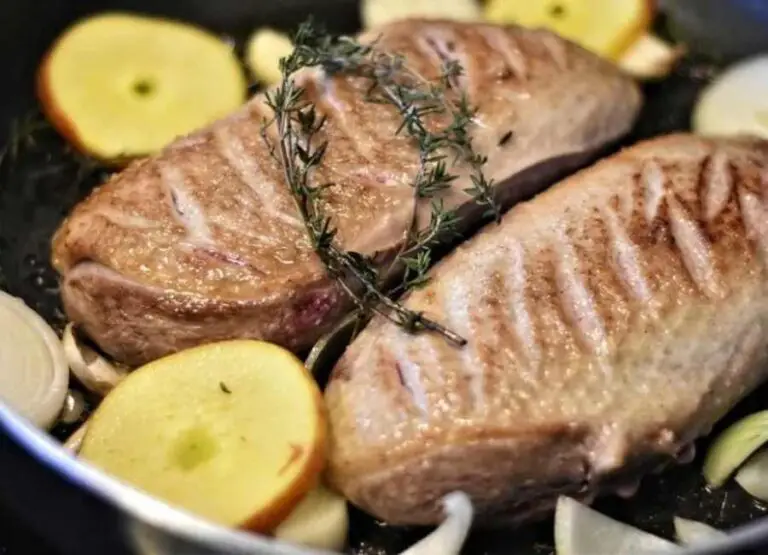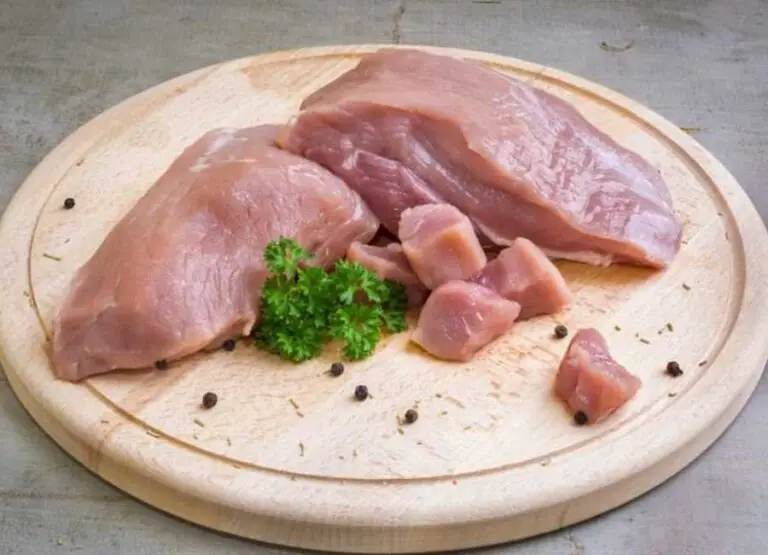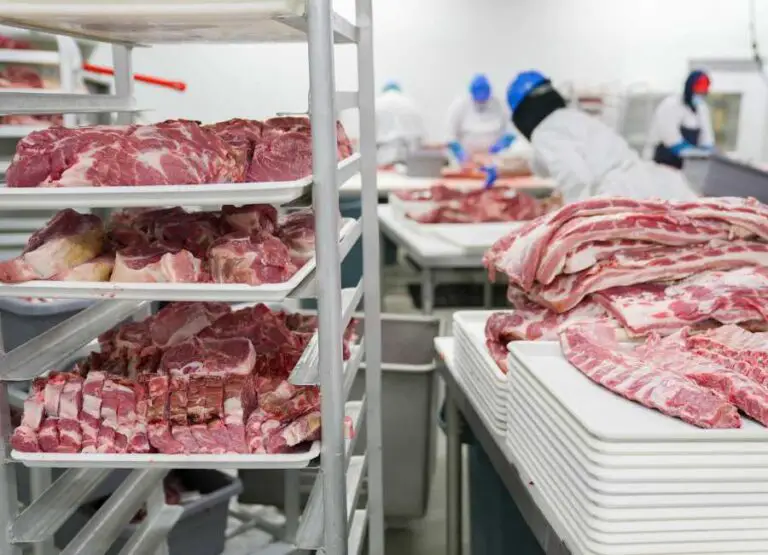5 Long-term Meat Storage Without Refrigeration
Are you tired of constantly having to restock your fridge or worry about keeping your meat fresh?
Have you ever wondered if there is a way to store your meat long-term without needing refrigeration? Look no further!
In this post, we’ll explore some creative and effective ways to store meat for the long haul without the need for a fridge.
Whether you’re a prepper, hiker, or just looking for some space-saving ideas, these tips are sure to come in handy.
So let’s get started and discover how to keep your meat fresh and flavorful for months on end.
Long-term Meat Storage Without Refrigeration
There are several methods for storing meat long-term without refrigeration.
Here are some options:
1. Drying
Meat has been preserved through drying for a very long time.
By drying out the meat, the method prevents the development of germs and fungi that lead to deterioration.
The flesh gets tougher and less prone to deterioration when it is dried.
Meat can be dried by cutting it into thin slices and hanging them until they are hard and dry in a well-ventilated location.
To make sure that the meat dries uniformly and doesn’t grow mold or rot, the drying area’s temperature and humidity should be watched carefully.
A dehydrator is a different choice that can hasten to dry and provide you with more control over the drying environment.
If dried meat is kept in a cold, dry environment, it can be kept for a number of months without refrigeration.
It can be used in dishes that call for dried meat, like jerky, or consumed as a snack.
Pros:
- Does not require electricity or refrigeration
- Preserves the flavor and nutritional value of the meat
- Can be used on a variety of meats including beef, pork, and fish
Cons:
- The drying process can take a long time and requires a lot of space
- The resulting meat can be tough and hard to chew
2. Smoking
Another age-old technique for preserving meat involves smoking, which entails subjecting it to heat and smoke.
Compounds in the smoke prevent bacterial growth and preserve the meat.
Meat can be smoked in a smoker or by hanging it over an open flame.
Before being smoked, the meat is often seasoned with a blend of spices and salt to improve its flavor.
Depending on the type and thickness of the meat, the smoking process might last anywhere from a few hours to a few days.
To make sure the meat is fully cooked and doesn’t mold or deteriorate, the temperature and humidity of the smoking area should be watched carefully.
If maintained in a cool, dry area, smoked meat can be kept for several months without refrigeration.
It can be used in dishes that call for smoked meat, such as sausages or ham, or it can be consumed as a snack.
Pros:
- Adds flavor to the meat.
- Preserves the meat for an extended period.
- It can be used on a variety of meats including fish, poultry, and beef.
Cons:
- Smoking can expose meat to harmful chemicals if not done properly
- The smoking process can be time-consuming and requires skill to ensure the meat is safe to eat
Learn more about how to know a slice of smoked meat is bad.
3. Salting
In order to remove moisture and stop bacterial growth, meat is salted as a method of preservation.
The meat gains taste from the salt as well. Meat can be salted by cutting it into pieces, then rubbing it with salt before putting it in a container.
To ensure that all sides of the meat are salted, the container should be stored in a cool, dry location and the meat should be turned over frequently.
Depending on the thickness of the meat, the salting process might last anywhere from a few weeks to a few months.
Before eating or using the meat in recipes, the meat can be rinsed to get rid of extra salt after it has been salted.
If salted meat is kept in a cold, dry environment, it can be kept for a number of months without refrigeration.
It can be used in recipes that call for salted meat, such as corned beef, or consumed as a snack.
Pros:
- Does not require electricity or refrigeration
- Preserves the flavor and nutritional value of the meat
- It can be used on a variety of meats including beef, pork, and fish.
Cons:
- The high salt content can make it unhealthy if consumed in excess
- The salting process can be time-consuming and requires skill to ensure the meat is safe to eat.
4. Canning
Meat is placed in a jar or can and then sealed as part of the canning process to preserve it.
After the meat has been heated to a high temperature to kill bacteria, the container is sealed to keep out any new bacteria.
If preserved in a cold, dry environment, canned meat can be kept for several months or even years without refrigeration.
Meat that has been cut into pieces and cooked in a pressure canner to achieve a temperature high enough to kill any bacteria can be canned.
After that, the meat can be put in jars or cans and sealed.
The canned meat can be consumed on its own or used in dishes like stews and soups that call for tinned meat.
Pros:
- Canned meat can be stored for several years
- Does not require electricity or refrigeration
Cons:
- Requires specialized equipment and skills to properly can meat
- The texture of the meat can change during the canning process, resulting in a less desirable texture
Learn more about dehydrating raw meat.
5. Sugar-curing
Meat is covered with sugar and salt as part of the sugar-curing process to take out moisture and stop bacteria from growing. The sugar also gives the meat taste.
Meat can be chopped into pieces and rubbed with a sugar and salt mixture before being put in a container to be sugar-cured.
To ensure that the meat is sugar-cured on all sides, the container should be stored in a cold, dry area and the meat should be turned over frequently.
Depending on the thickness of the meat, the sugar-curing process might last anywhere from a few days to many weeks.
After being sugar-cured, the meat can be rinsed to get rid of extra sugar and salt before being consumed or utilized in recipes.
Learn more about methods of meat preservation.
Frequently Asked Questions
Can you store meat without refrigeration for an extended period?
Yes, you can store meat without refrigeration for a long time using various methods such as drying, salting, smoking, or canning.
What types of meat are best suited for long-term storage without refrigeration?
Game meat like venison, elk, or moose works very well for long-term storage without refrigeration, whereas beef or pork is more challenging.
What’s the best way to store meat without refrigeration?
The best method to store meat without refrigeration is to dry it out using a dehydrator, smoker, or air-drying.
How long can meat be stored without refrigeration?
It depends on the method used for storing the meat and the environmental conditions, but properly dehydrated meats can last for several months without refrigeration.
Can you store meat without refrigeration if it’s already cooked?
Yes, you can store cooked meat without refrigeration for a short time using preservation methods such as canning or drying.
What are some safety precautions to consider when storing meat without refrigeration?
It’s crucial to ensure that the meat is fully cooked before trying to store it, to avoid bacterial growth.
It’s also important to store the meat in a dry and well-ventilated area, away from insects and other pests.
Learn more about storing meat in the fridge.
Conclusion
Long-term meat storage without refrigeration can be challenging, but with the right techniques, it’s possible.
From smoking and curing to dehydrating and canning, there are several ways to preserve meat for an extended period of time.
So, whether you’re planning a camping trip, living off-grid, or simply trying to reduce your reliance on electricity, there are plenty of options to help you enjoy fresh meat even without a fridge.
Don’t let a lack of refrigeration limit your culinary creativity or enjoyment – explore the world of long-term meat storage today!



![Is Pork Sausage Healthy [Full Explanation]](https://foodcreeks.com/wp-content/uploads/2023/02/Is-Pork-Sausage-Healthy-768x555.jpg)


![Can Pregnant Women Eat Uncured Meat [Answered]](https://foodcreeks.com/wp-content/uploads/2023/02/Can-Pregnant-Women-Eat-Uncured-Meat-768x555.jpg)
